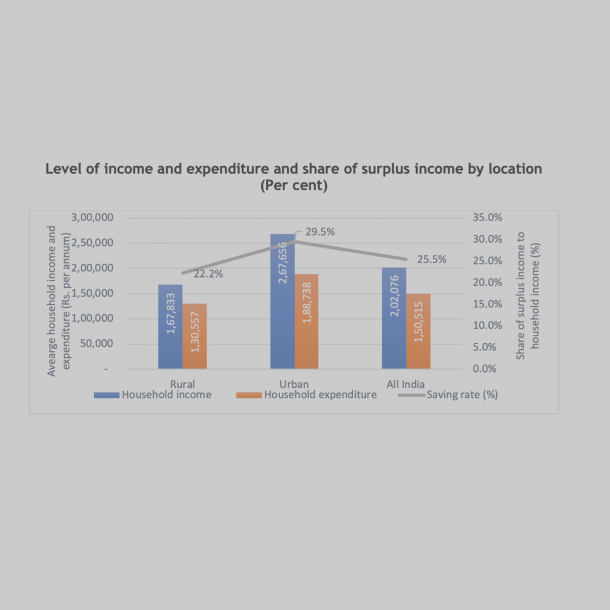
Changing consumer segmentation and identification of best customer
The fast changing consumerism in India over the last two decades, particularly post pandemic, has made the formidable task of understanding the changing consumer contours, where strategies that are required to be constantly fine-tuned to meet the need of the end-users are becoming even more challenging. For instance, two decades ago, ownership of consumer durables by an SEC-A consumer and an SEC-C consumer would have been distinctly different. This is not the situation any more. Today, you can expect both groups of consumers to have access to mobile phones, television sets, computers and other gizmos.
At the bottom of pyramid was a large base of the deprived, including households that the Planning Commission (now NITI Aayog) classified as poor, followed by aspiring, climbers and middle class who accounted for much of the consumption of manufactured goods, and western elite or rich at the top. The income pyramid is gradually developing into a fat lady with smaller bottom of deprived and aspirants, a bulge in the middle class, and a big head of the rich. As linkages between rural and urban India have grown in more ways than one, the rural-urban divide in consumer behaviour too has begun to be less stark than it used to be. Gone are the days when consumers could be neatly slotted into a definite category based on a single indicator. Similarly, absolute income data no longer provides validity over a long period of time. To illustrate, going by the income data of 1985-86, those that were classified as the low income group has almost ceased to exist as of 2007-08.
Lack of understanding of consumers, consumption and consumerism at a desirable micro level has only compounded the problem and has made the situation even more daunting. The traditional and conventional research means of using singular dimension or for that matter only socio-economic attributes in silo along with a one-size-fits-all approach to consumer segmentation have only added to these woes and miseries rather than throwing much light, to the extent that findings from some of these studies have started providing frightfully misleading results and inferences.
All these lead us to one singular conclusion. That is the conceptual framework and our traditional approach to consumer research need a significant overhaul and facelift to generate truly meaningful, relevant and actionable consumer insights that unfortunately are sorely missing in todays research world to a great extent. Prolific users of consumer segmentation are now extremely keen to see tangible returns on their investments and are looking forward to using almost real-time micro-segmentation information to effectively target, for example, advertising, promotions, selling propositions et al to our diverse consumers.
The challenge, therefore, is to come up with an integrated model that factors in income data, product ownership data, demographics-related information, psychographics, expenditure and savings data to create a holistic, reliable and a multi-dimensional profile of todays Indian consumer at a desirable micro level. That indeed is the journey transitioning from traditional consumer segmentation to a new consumer personification approach much needed to demystifying consumer, consumption and consumerism.
From a marketer and industry standpoint, these understandings and insights will emanate from being able to conclusively address important questions such as but not limited to: Who is my best customer Where do they live How do they earn, spend and save What do they like to read, listen, watch and buy How can I reach them most effectively In other words, decision makers at all levels and in all spheres will now require a flexible framework that will provide for consistent consumer lens to uncover unmet consumer demands from the local market level to a national perspective which our research work will now provide. The ability to identify, quantify and geographically locate specific consumer groups will further demand cluster-based research work. Rich, timely and accurate information, fast changing Indian consumer demographics and consumer trend is critical to formulate business strategies. The good news is there’s more consumer-oriented information and more opportunity than ever before. Information is everywhere in company enterprise systems, in external data sources, in emerging channels like social media, each phone call, email, chat request, or person-to-person interaction between a customer and a brand. This wealth of data can reveal precious insight into customers needs and desires, allowing companies to personalise their communications and services. But unless this deluge of information is brought together and managed properly, rather than dispersed across different verticals, it might do organisations more harm than good, leading to inconsistent customer experiences across different channels. Thus, it turns into a bad news that there’s so much information out there that it can be really hard to harness and make sense of this data.
In my opinion, emerging technological innovations and innovative data analytics are the most decisive factors to bring consumer research to the next logical level. More specifically, leveraging large volumes of structured, semi-structured and unstructured data originating from a variety of disparate sources with appropriate velocity enabled through methodological innovations, sophisticated data mining techniques, analytical tools, highly powerful processing engines and cutting edge technology, we hope to further unravel many a mystery around consumer understanding and insights in the days to come. Hence, as a way forward, I feel to further leverage some creative amalgamations that might still be possible to effectively combine traditional research methods with evolving modern research techniques; traditional media with emerging/social media as data sources; traditional/conventional structured data types with semi-structured and completely unstructured data types like voice, text, image, etc.; traditional data collection approaches with high-tech real time flawless geospatial data collection with GIS capabilities that will enable data visualisation; and last but not the least traditional data analytics with innovative Big Data analytics to take consumer personification to the next level of refinement.
Please share your comments at rajesh.shukla@ice360.in.